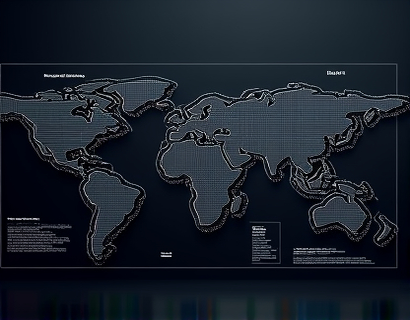Advancing Research in Graph Theory and Fluid Dynamics: Leveraging Innovative Software Solutions
In the realm of modern scientific research, the intersection of graph theory and fluid dynamics presents a complex yet fascinating area of study. For researchers and engineers, navigating the intricacies of these fields requires not only a deep understanding of the underlying principles but also access to sophisticated tools that can handle the computational demands and data complexity. This article explores how advanced software solutions are revolutionizing the way professionals approach problems in graph theory and fluid dynamics, offering enhanced analysis, visualization, and ultimately, innovative discoveries.
The Importance of Advanced Software in Graph Theory and Fluid Dynamics
Graph theory, a branch of mathematics that studies the properties of graphs, which are mathematical structures used to model pairwise relations between objects, has found extensive applications in various fields including computer science, network analysis, and optimization. Fluid dynamics, on the other hand, is the study of fluids in motion and the forces acting on them, crucial for understanding phenomena in physics, engineering, and environmental science. The complexity of these fields necessitates the use of advanced software to manage and interpret large datasets, simulate intricate systems, and visualize results effectively.
Streamlining Complex Data Analysis
One of the primary challenges in both graph theory and fluid dynamics is managing and analyzing vast amounts of data. Advanced software solutions are designed to streamline this process by providing robust algorithms and efficient data processing techniques. These tools can handle large-scale networks and complex fluid simulations, reducing the time and effort required to extract meaningful insights. For instance, graph algorithms can quickly identify critical nodes, communities, and paths within a network, while fluid dynamics software can simulate flow patterns, pressure distributions, and turbulence with high precision.
Moreover, these software solutions often incorporate machine learning and artificial intelligence to enhance data analysis. By leveraging these technologies, researchers can automate pattern recognition, predict system behaviors, and optimize parameters in real-time. This not only accelerates the research process but also opens up new avenues for exploration and discovery.
Enhancing Visualization for Better Understanding
Visualization plays a critical role in both graph theory and fluid dynamics, as it helps in interpreting complex data and communicating results effectively. Advanced software solutions offer powerful visualization tools that transform raw data into intuitive and informative graphics. For graph theory, this includes node-link diagrams, adjacency matrices, and hierarchical layouts that reveal the structure and dynamics of networks. In fluid dynamics, visualization tools can render 3D flow fields, velocity vectors, and pressure contours, providing a clear picture of fluid behavior.
Interactive visualization features allow users to manipulate parameters, zoom in on specific areas, and explore different scenarios dynamically. This interactivity is invaluable for researchers who need to experiment with various conditions and observe the outcomes in real-time. Additionally, the ability to export visualizations in high-quality formats facilitates publication and presentation, ensuring that findings are communicated clearly and effectively.
Optimizing Performance in Intricate Systems
The application of advanced software in graph theory and fluid dynamics extends beyond data analysis and visualization to optimizing the performance of intricate systems. In graph theory, optimization problems such as shortest path, minimum spanning tree, and network flow are fundamental. Software solutions provide efficient algorithms to solve these problems, enabling the design of optimal networks for communication, transportation, and resource distribution.
In fluid dynamics, performance optimization is crucial for applications ranging from aerospace engineering to environmental management. Advanced software can simulate and analyze fluid systems under various conditions, helping engineers design more efficient systems with reduced energy consumption and improved functionality. For example, in the design of aircraft wings or ship hulls, software can simulate air and water flow, identify areas of high resistance, and suggest modifications to enhance performance.
Case Studies and Real-World Applications
To illustrate the practical impact of these advanced software solutions, consider a few real-world applications:
- Network Optimization: In telecommunications, graph theory software helps in designing robust and efficient network topologies. By analyzing node connectivity and flow, engineers can optimize data transmission routes, reduce latency, and enhance overall network performance.
- Fluid Simulation in Automotive Industry: Car manufacturers use fluid dynamics software to simulate airflow around vehicle designs. This helps in reducing drag, improving fuel efficiency, and enhancing aerodynamic stability. For instance, the development of more aerodynamic car models has been significantly aided by advanced simulation tools.
- Environmental Flow Modeling: In environmental science, fluid dynamics software is used to model water flow in rivers, oceans, and wetlands. This aids in understanding and managing water resources, predicting flood risks, and assessing the impact of climate change on aquatic ecosystems.
These applications demonstrate the versatility and importance of advanced software in addressing real-world challenges across various industries.
Future Trends and Innovations
The field of graph theory and fluid dynamics is continually evolving, driven by advancements in computational power, algorithmic innovations, and the increasing availability of big data. Future software solutions are likely to incorporate even more sophisticated techniques, such as quantum computing, to tackle problems that are currently intractable. Additionally, the integration of virtual and augmented reality technologies could provide immersive visualization experiences, further enhancing the research process.
Another promising area is the development of multi-physics simulation tools that can simultaneously model and analyze multiple physical phenomena. This would allow researchers to study complex systems where fluid dynamics interacts with other fields, such as structural mechanics or thermal analysis, providing a more comprehensive understanding of system behavior.
Conclusion
Advanced software solutions are transforming the way researchers and engineers approach problems in graph theory and fluid dynamics. By streamlining data analysis, enhancing visualization, and optimizing system performance, these tools are not only making research more efficient but also opening up new possibilities for innovation. As the fields continue to evolve, the demand for sophisticated software will only grow, underscoring the importance of staying at the forefront of technological advancements.










































